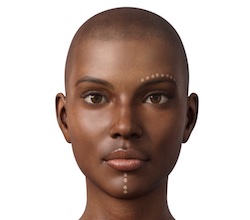It’s unclear who exactly started influencer marketing. Most experts believe the strategy began when the Roman Empire introduced gladiators to the world in 105 BCE. The most successful gladiators were often considered celebrities and occasionally endorsed products, including wine and oils.
Fast forward to the 21st century and more precisely, the dawn of social media in the early 2000s, when big brands and celebrity influencers started collaborating to promote brands’ products or services, entrenching modern-day influencer marketing within content-driven marketing campaigns.
In recent years, things have shifted and brands have been sitting up and taking notice, recognising the rise of South Africa’s macro and nano-influencers … and their potential to fulfil on their brand and business objectives – especially when it comes to marketing to ‘GenZers’.
They have changed tack, aligning their brands with this pool of great content creators who are notable in their communities, and who generally have a higher engagement rate and loyal subsets of influencer communities.
Is GenAI set to reshape the influencer landscape?
While we were sleeping, the luminaries and minds-behind-the-magic in tech-land like Sam Altman have been very busy, leading to the next great trend in influencer marketing, generative AI.

GenAI heralds a big jump in the world of influencer marketing, though I’m not sure that it will be a lasting trend. The appeal is real though, and already South Africa has its own share of virtual Influencers, three of which have been debuted by Johannesburg-based AI company, The Avatar Company.
The most popular is Kim Zulu, who has featured in new campaigns for PUMA and Mercedes Benz and has her own Instagram account.
The question is: will they replace the real influencers? Speaking for the GenZ audience, it’s hard to believe that they would prefer a virtual ‘friend’ or celeb to a real one, especially one who can’t really relate to their life experiences in any kind of empathetic way.
While I can appreciate the novelty appeal of digital avatars that have their own social media accounts, post great content and interact with their followers, I wouldn’t be surprised if it wears off eventually. After all, the success of influencer marketing has been built on being the genuine ticket.
Why influencer marketing works
Regardless of the shape-shifting that is paving the way of the future, I believe the reason influencer marketing is flourishing comes down to two qualities: authenticity and relatability – something macro and nano influencers have in spades.
They are after all, food bloggers, comedians, dancers, and artists who are sharing their passions in an authentic and relatable way on social media platforms where the Gen Z crowd live.
The recent uptake in branded influencer content or brands collaborating with influencers to host podcasts, spaces and online events, just illustrates again how this audience really values authentic connections.
Nano and macro influencers are known to be far more selective about the brands they work with. They understand that their first priority is their community. They know that engaging with their community in a way that is real and genuine is the key to retaining them.
Word of mouth
Mostly, they do this naturally as a matter of principle, and it’s this quality that wins them their following. Gen Zs know intrinsically which influencers are mentioning specific brands because they are being paid top dollar or ‘getting the bag’, and they just don’t buy it. Period.
Added to that is the foundation on which influencer marketing is built: word of mouth. One of the fundamental channels of marketing. Not only are they giving your brand or product their stamp of approval – they are aligned with your values.
Marketers recognise that influencers are natural brand advocates, and social media gives them the creative platform to not only share their advice in a way that is real and entertaining, but to convert their followers into thousands of brand advocates who also spread the word.
Trust is everything
Brand trust is especially important to Gen Z consumers. And many view influencers as peers or friends rather than celebrities or corporate entities. That means that when an influencer recommends a product or service, they embrace it like they would a friend’s recommendation, making it more trustworthy in their eyes.
A great example of a campaign that tapped into the sentiment of this youth audience is Standard Bank’s #10% millionaire campaign ‘The plug to build your dream 10% at a time’. Featuring trusted influencers like Chad jones, who share how they are building their dreams one step at a time, portrayed through engaging content across Meta and Tik Tok, it just works.

Brands that align with influencers whose vision and ethics resonate with their own have found a sure way to win the hearts of the Gen Z audience.
As the saying goes, trust is everything.
Into the future
What is clear, is that influencer marketing is here to stay, and it’s important that marketers keep up with the latest trends, whether it takes us into the wild and wonderful world of the metaverse or back to a future void of AI.
The MMA SA leads the movement that shapes the future of marketing in South Africa and their annual SMARTIES Awards are renowned for upweighting campaigns that reflect excellence in business impact.
Now in its 10th year, SMARTIES has introduced new-gen categories ‘Creator, Influencer and Celebrity Marketing’ underscoring the huge impact these have on businesses that implement these marketing strategies successfully.
Entries have opened and can be submitted here.
Takalani Masikhwa is a digital strategist for Mindshare South Africa and chair of the newly created MMA SA Youth Development Board. He is an award-winning digital strategist and aspiring captain of industry striving to be the very best at what he does. He aims to become the go-to person for all things media and business consulting. It’s not all always work – he enjoys curating music, taking leisurely walks and spending time with people.














